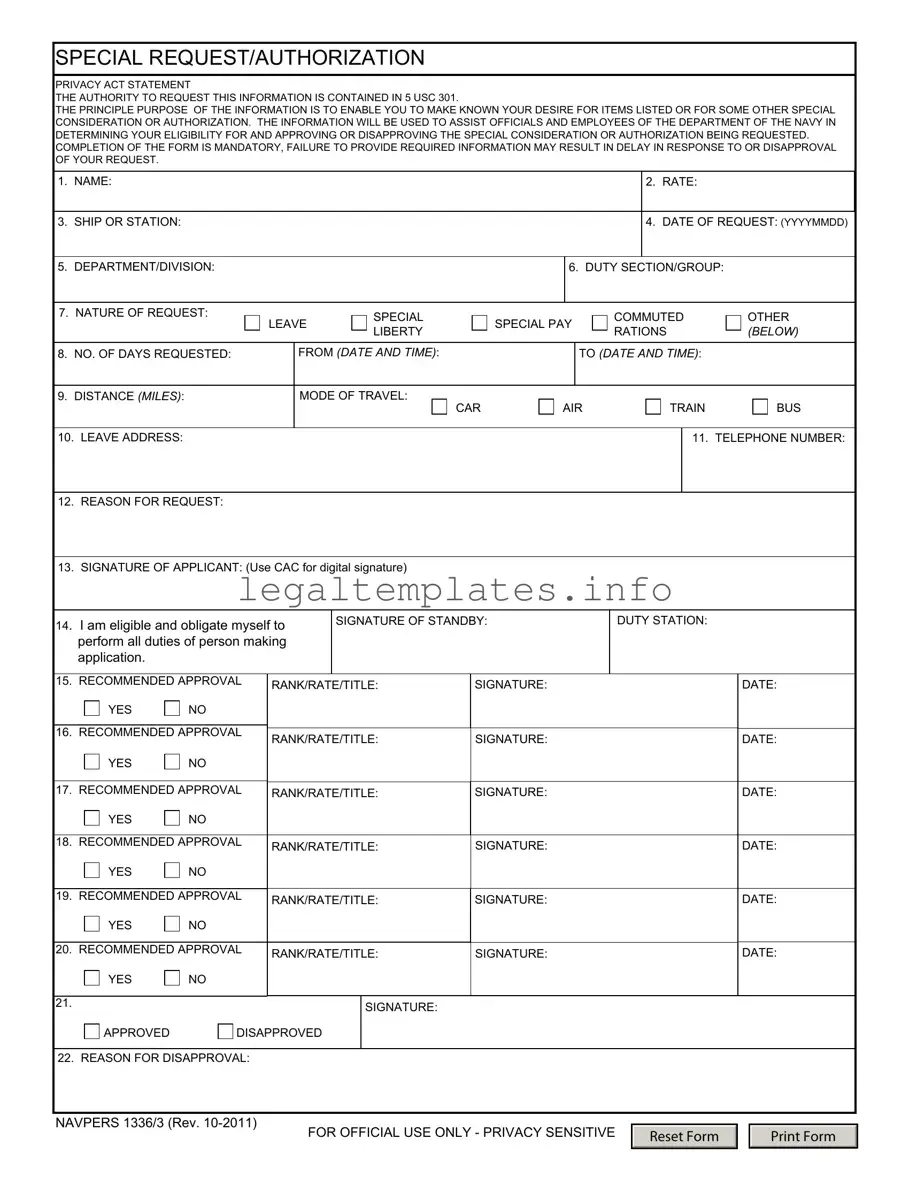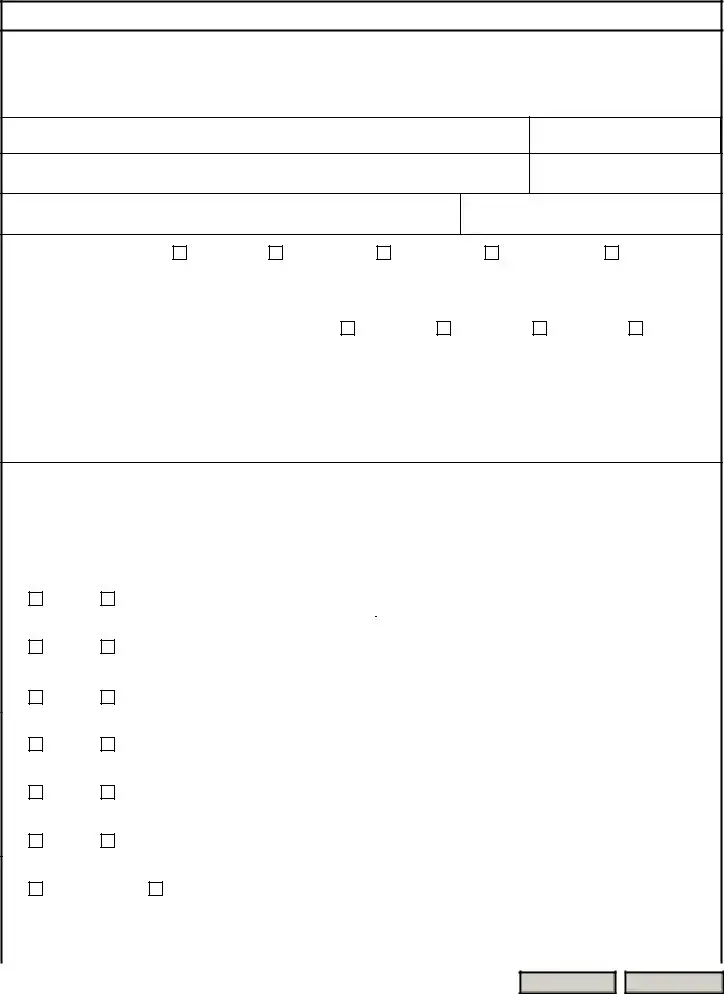What is the Navpers 1336/3 form?
The Navpers 1336/3 form, commonly referred to as the Special Request/Authorization form, is a document used within the Department of the Navy. It allows personnel to formally request special considerations or authorizations for a range of items or actions. The primary purpose is to communicate a member’s request for things such as leave, special pay, liberty, commuted rations, and other specific needs or permissions.
Why is the Privacy Act Statement included in the Navpers 1336/3 form?
The inclusion of the Privacy Act Statement in the Navpers 1336/3 form is to inform the applicant about the legal basis for requesting personal information (5 USC 301) and the intended use of this information. It aims to safeguard personal data while ensuring that the collected information serves the process of determining eligibility, and approving or disapproving the request made by a Navy member. The statement also underscores the mandate to complete the form, highlighting the implication of not providing the needed information, such as potential delays or disapproval.
Is it mandatory to fill out the Navpers 1336/3 form?
Yes, completing the Navpers 1336/3 form is mandatory for those seeking any special consideration or authorization outlined within the form. Failure to provide the requisite information can result in a delay in processing or outright disapproval of the request, thereby affecting the applicant's ability to obtain the desired authorization or consideration.
What information is required when filling out the Navpers 1336/3 form?
When filling out the Navpers 1336/3 form, applicants are asked to provide a range of information to help officials evaluate their request. This includes basic identifying details like name, rate, ship or station, and department/division. Additionally, the form requires specifics about the nature and details of the request, such as the type of special consideration, duration, travel mode, leave address, contact number, and the reason for the request. A signature from the applicant, and, if applicable, signatures for recommendations and approvals, are also mandatory.
How are requests on the Navpers 1336/3 form approved?
Requests submitted via the Navpers 1336/3 form go through a multi-level review process. Initially, the direct supervisors or commanding officers review the request, evaluating its necessity and the applicant's eligibility. Recommendations for approval or disapproval, along with signatures from relevant officials, are then provided. The final decision, marked by an approving authority’s signature, indicates whether the request has been approved or disapproved. This structured process ensures that each request is carefully considered based on merit and organizational policy.
What happens if a request on the Navpers 1336/3 form is disapproved?
If a request on the Navpers 1336/3 form is disapproved, the decision is documented on the form itself, including the authority's signature who made the decision and, in most cases, the reason for disapproval. The applicant is notified of the decision and can seek clarification on the reasons for the disapproval from their commanding officer or supervisor. Depending on the reason, the applicant may revise and resubmit the request or explore other avenues to address their need.
Where can one obtain a Navpers 1336/3 form?
The Navpers 1336/3 form can be obtained through official Navy channels. Typically, personnel can access it through their unit's administrative office or download it from the official Navy personnel command website or intranet portal. It is advisable to verify the form's most current version and any specific instructions or guidelines provided by the command when completing and submitting the form.

